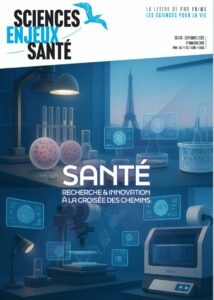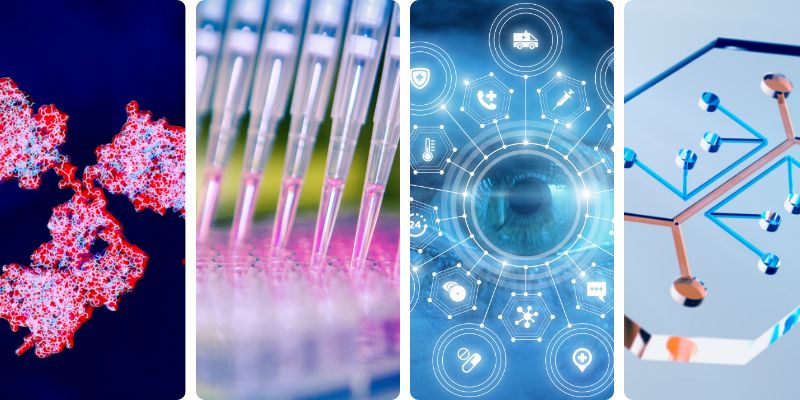
Winners of the German Startup Awards and MEET2WIN, A GPT Agent for OoC, Mapping the future of organoids, SARA-ICE : Skin Sensitization Risk Assessment and more
News on non-animal methods
MAY 26 - 30, 2025NEWS, REPORTS & POSITION STATEMENTS
1. FDA’s shift from animal testing opens doors for organoid makers
The FDA says that over the next 3 – 5 years it aims “to make animal studies the exception rather than the norm” for preclinical safety testing, starting with monoclonal antibodies and eventually encompassing all drugs. The agency might even fast-track reviews of studies that use alternatives to animals.
“It was a much bigger step than we expected. It feels like a key watershed, historic moment,” says Tomasz Kostrzewski, chief scientific officer at CN Bio. “It’s a real flag in the sand. Emulate, CN Bio and other organ-chip manufacturers stand to gain from this shift. So do developers of organoids and computer simulations.
Read the analysis in Chemical and Engineering News
INTERVIEWS, NOMINATIONS & AWARDS
2. Ghazaleh Madani : Newcomer of the Year at the German Startup Awards
CEO at Canchip, a German-based innovative service provider in cancer research,Ghazaleh Madani has been awarded Newcomer of the Year at the German Startup Award.
Recognizing and supporting innovative startups in Berlin and North Rhine-Westphalia, the Newcomer of the Year at the German Startup Awards honor outstanding newcomer founders that are aspiring to make a significant impact in Berlin’s entrepreneurial scene. Winners gain access to funding opportunities, mentorship, and a strong support network to accelerate their growth.
Read the announcement on Ghazaleh Madani’s Linkedin
Explore the prestigious Berlin Newcomer Startup Awards
3. Building Bioartificial Hearts, One Beat at a Time
In the US, nearly 4,000 people await a heart transplant and more than six million live with heart failure caused by different cardiac conditions. To help address a shortage of life-saving organs, researchers have explored pig-organ transplants and titanium hearts as temporary solutions. Still, current transplant approaches require long-term immune suppression to prevent rejection, which increases the risk of organ failure.
Some scientists, including Camila Hochman-Mendez, a biophysicist at the Texas Heart Institute, are trying a unique approach : bioengineering a “bioartificial” heart from a patient’s own cells.
Read the short interview on The Scientist Magazine
4. One Biosciences : Winner of MEET2WIN in the Best Innovation category
On May 6 and 7, Bordeaux hosted the 10th edition of MEET2WIN, the European partnership convention dedicated to the fight against cancer. Organized by the French platform MATWIN, the event brought together more than 300 international stakeholders — researchers, major corporations, startups, investors, and support organizations — united by a shared ambition : to accelerate innovation in oncology.
Co-founded in 2020 by Institut Curie and Home Biosciences, One Biosciences won the Best Innovation – Precision Medicine / Diagnostics category. One Biosciences is developing a useful, disruptive technology that allows cancer cells to be analyzed one by one, directly from patient samples. Using artificial intelligence, it identifies treatment resistance mechanisms and helps choose the best therapeutic option for each patient. This approach paves the way for more effective, personalized precision medicine tailored to the complexity of cancers.
TOOLS, PLATFORMS, CALLS
5. A GPT AI Agent by Cherry Biotech to find the best O&OoC solution
Navigating between all 3D models can be challenging. The French start-up Cherry Biotech builts a GPT AI Agent to find the best organoids / organ-on-chip solution for each biology matter. Imputed with data from 70+ companies around the world offering organoids and organ-on-chip solutions, the open GPT Agent includes a custom prompt which asks questions to scientists in order to find out the right solution and propose personalized recommendations.
Founded by Jeremy Cramer, Cherry Biotech’s mission is to better predict drug effects and replace in-vivo models as much as possible. The French start-up has also recently launched the newsletter Organoids Digest, deep diving into the latest scientific papers in the field.
Read the announcement on Linkedin
6. Mapping the future of organoids by Roche, ETH Zurich and Helmholtz Munich
Scientists from Roche’s Institute of Human Biology (IHB), ETH Zurich and Helmholtz Munich, in collaboration with academic groups across the globe have developed computational tools to integrate datasets from different protocols and labs into “organoid atlases”. These atlases now allow researchers to compare the organoids’ cells across labs, protocols, and to patient samples, including those that will be collected and studied in the future.
“For these organoid models to be used in the drug discovery pipeline, we need to understand how reproducible they are to make, what cells are present, and how we can change the models to better meet our needs,” said Gray Camp, a senior group leader at IHB and co-corresponding author on the papers.
7. SARA-ICE : Skin Sensitization Risk Assessment — Integrated Chemical Environment Model
There is an international need for non-animal approaches to identify potential skin sensitizers. While defined approaches (DAs) are accepted for making a binary prediction of whether or not a substance might be a skin sensitizer (as described in OECD Guideline 497), there remains a need for non-animal approaches for quantitative prediction of skin sensitizer potency.
The Skin Sensitization Risk Assessment – Integrated Chemical Environment (SARA-ICE) DA is a Bayesian statistical model developed in a collaboration between NICEATM and the consumer products company Unilever. SARA-ICE uses data on over 400 chemicals from the NICEATM Integrated Chemical Environment (ICE) to predict a point-of-departure using any combination of in vivo (human predictive patch test or local lymph node assay) and in vitro (direct peptide reactivity assay [DPRA], kinetic DPRA, KeratinoSens™, human cell line activation test, or U‑SENS™) data.
Read more and access the SARA-ICE tool
SCIENTIFIC DISCOVERIES & PROTOCOLS
8. Engineering functional endocrine pancreatic constructs with bioprinting and synthetic biology approaches
Diabetes is a complex disease affecting over 500 million people worldwide. Traditional approaches, such as insulin delivery, are mainstay treatments, but do not cure the disease.
In an article published in Trends in Biotechnology, Davide Ribezzi et al. discuss recent progress in bioprinting a functional endocrine pancreas, ranging from cell sources to main advances in biomaterials. The researchers review innovative areas for the development of this field, with a particular focus on the convergence of synthetic biology and cell engineering with bioprinting which opens new avenues for developing advanced in vitro models and regenerative, transplantable grafts, with the potential to provide independence from exogenous insulin administration.
Read the article in Trends in Biotechnology
9. Next-Generation Risk Assessment with non-animal approach
A new case study published in ALTEX showcases the application of Next-Generation Risk Assessment (NGRA) to evaluate the safety of benzophenone‑4 (BP‑4), a UV filter used at 5% in a body lotion. The project brought together scientists and regulators to explore the practical implementation of NGRA, emphasizing its ability to deliver meaningful safety assessments without the use of animals.
By combining exposure modeling with multiple in silico and in vitro methods, the study evaluated internal concentrations and biological activity to determine safe exposure margins. “This work demonstrates the usefulness of next generation risk assessment in addressing pressing relevant regulatory questions without using animals” wrote Maria Teresa Baltazar, Science Leader at SEAC, Unilever, and the co-authors. This study offers a real-world example of how NGRA supports human-relevant, science-based regulatory decision-making.


